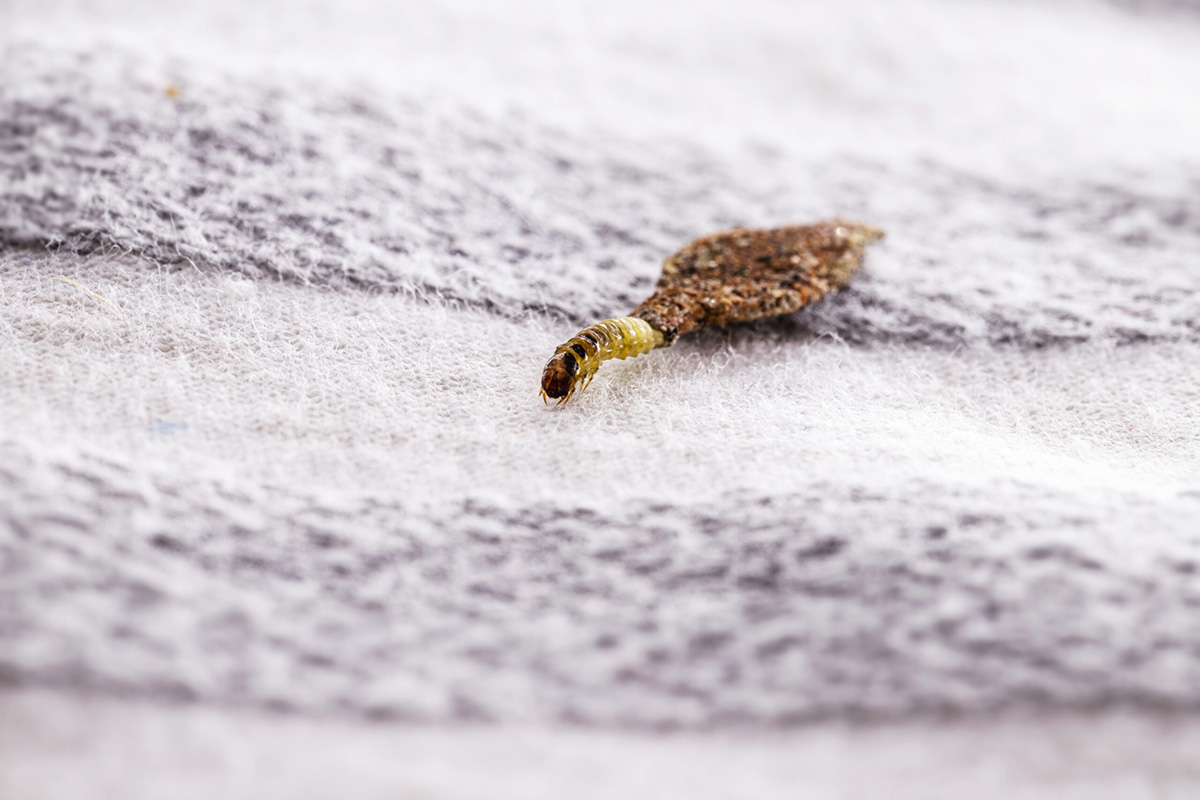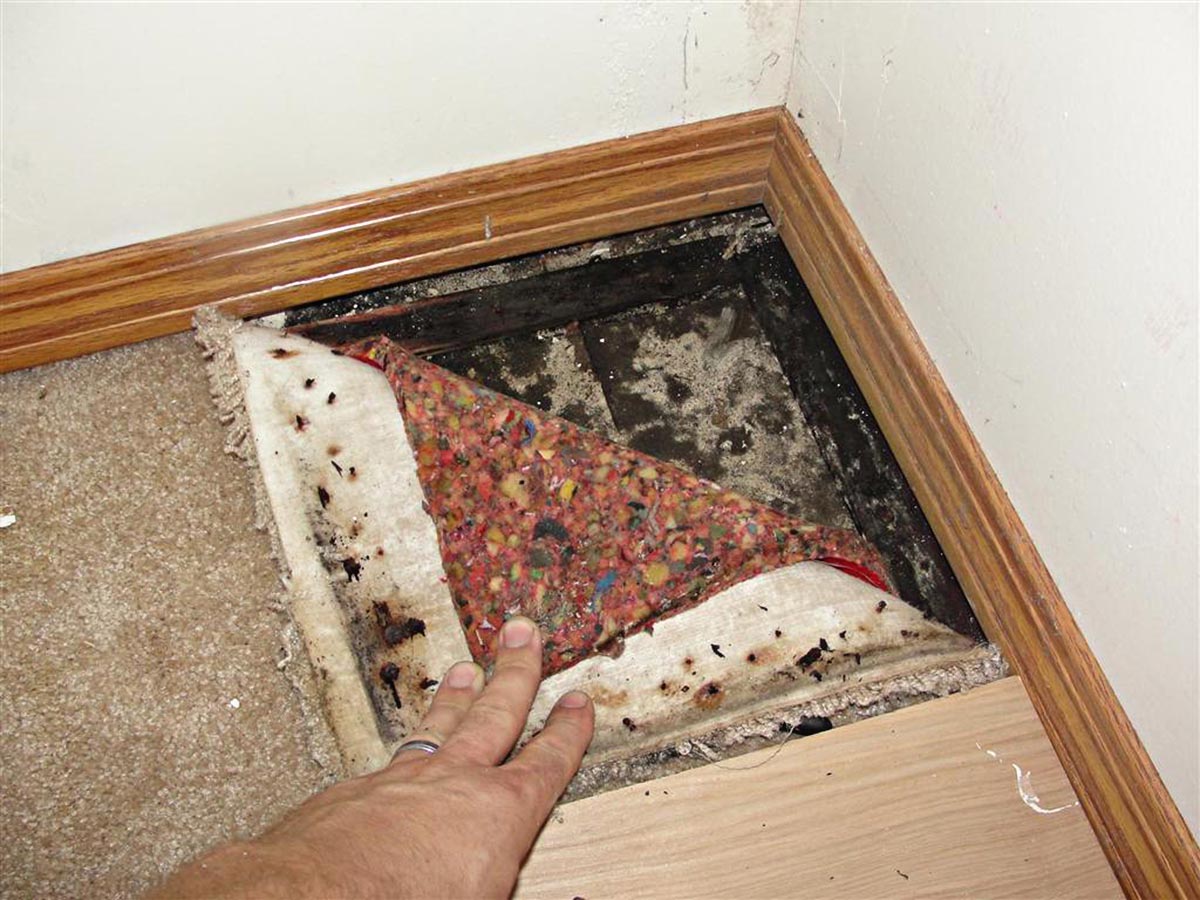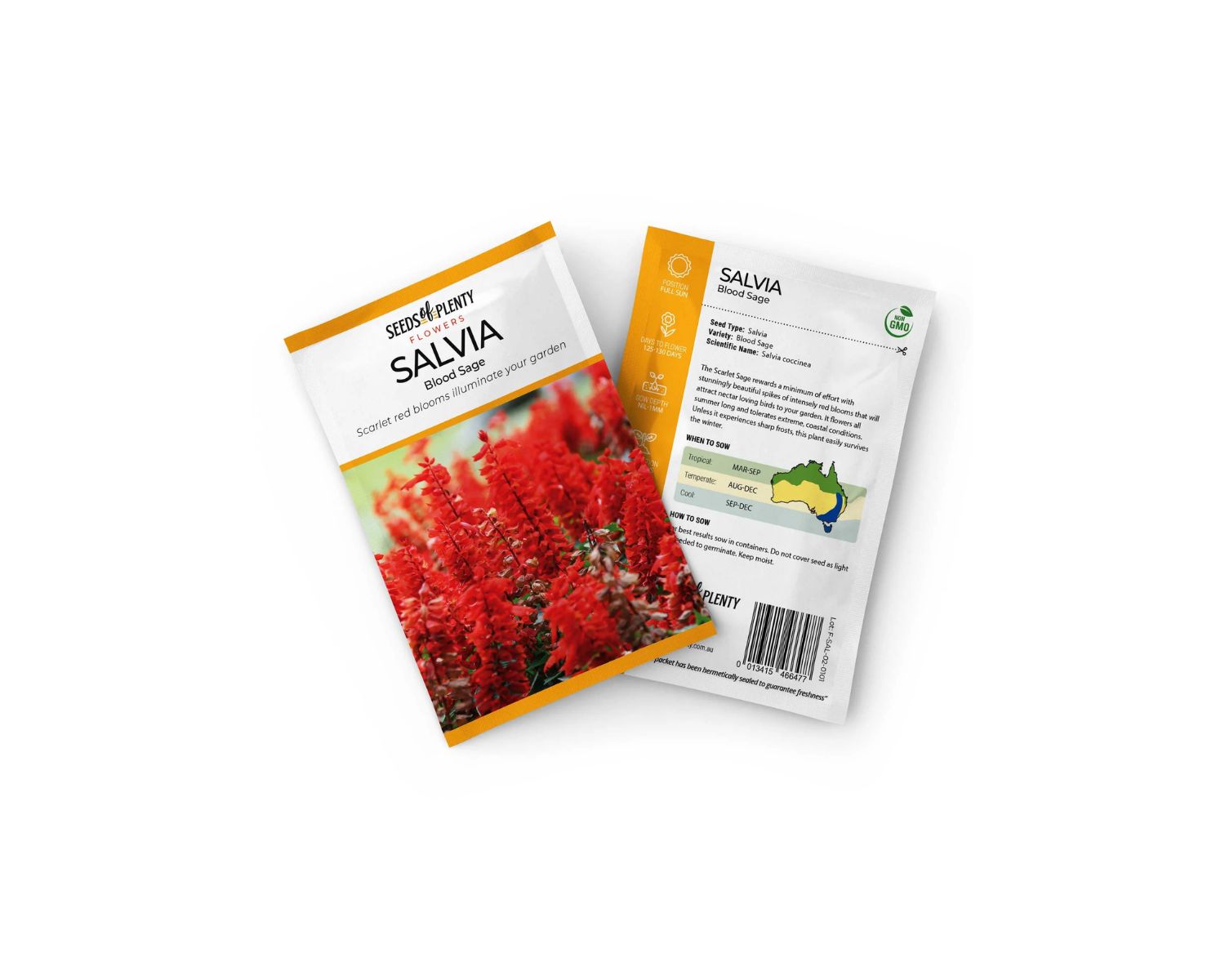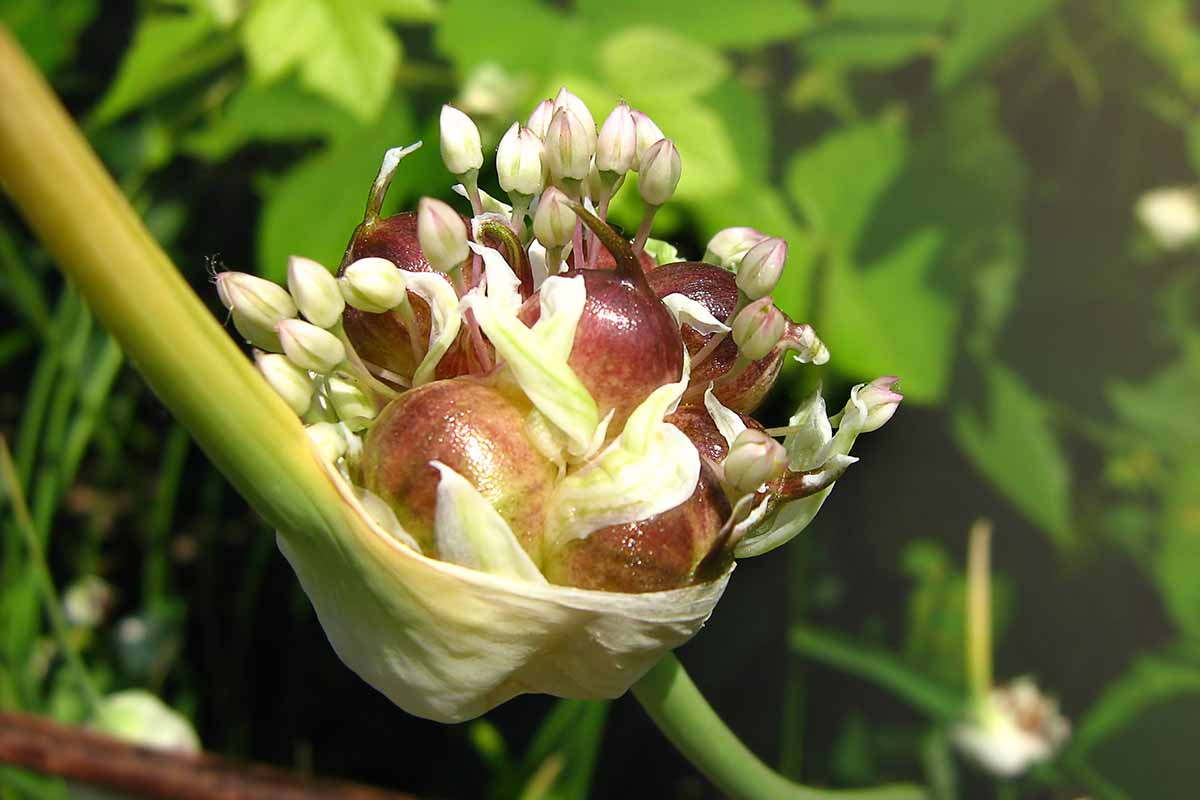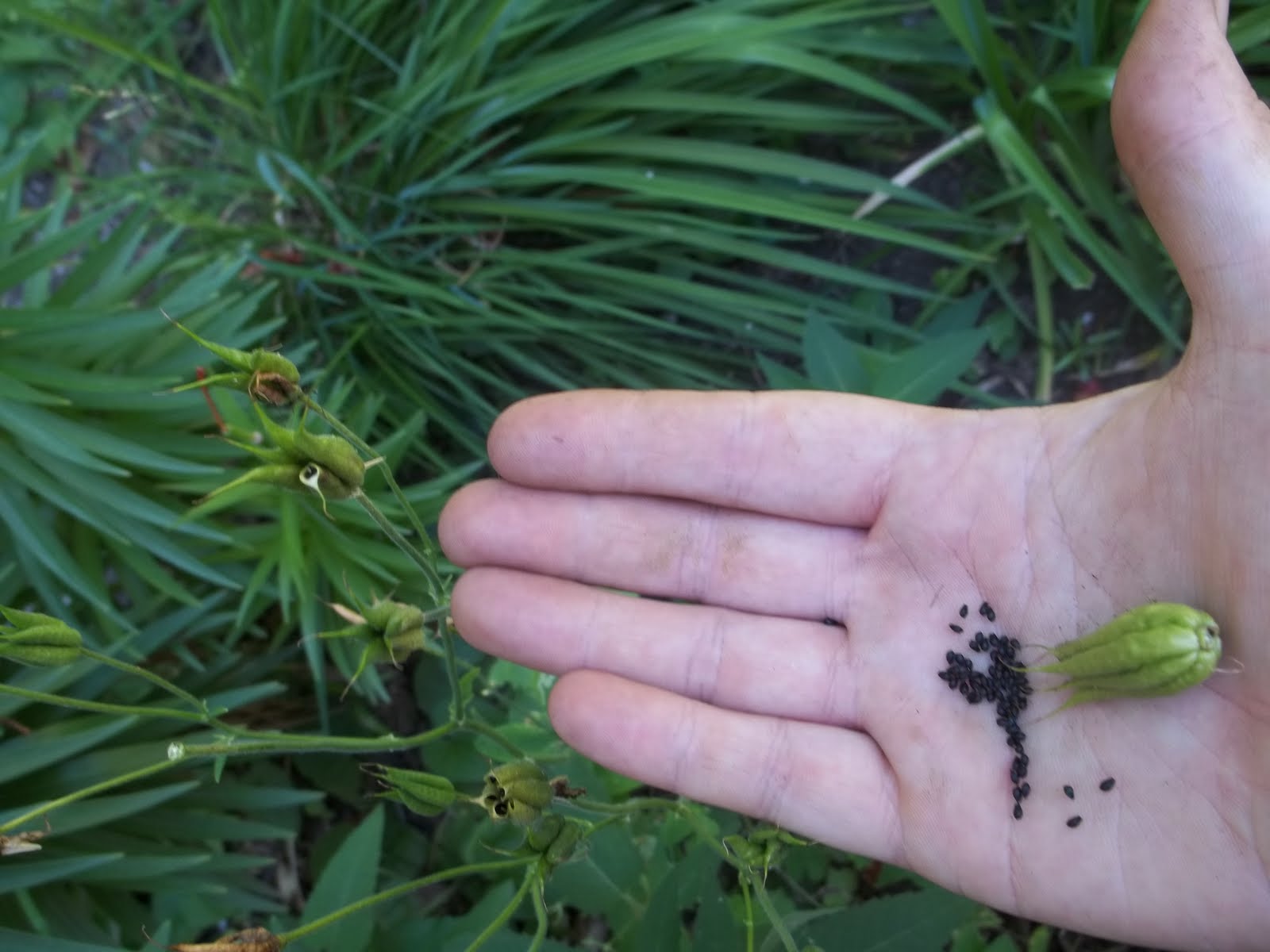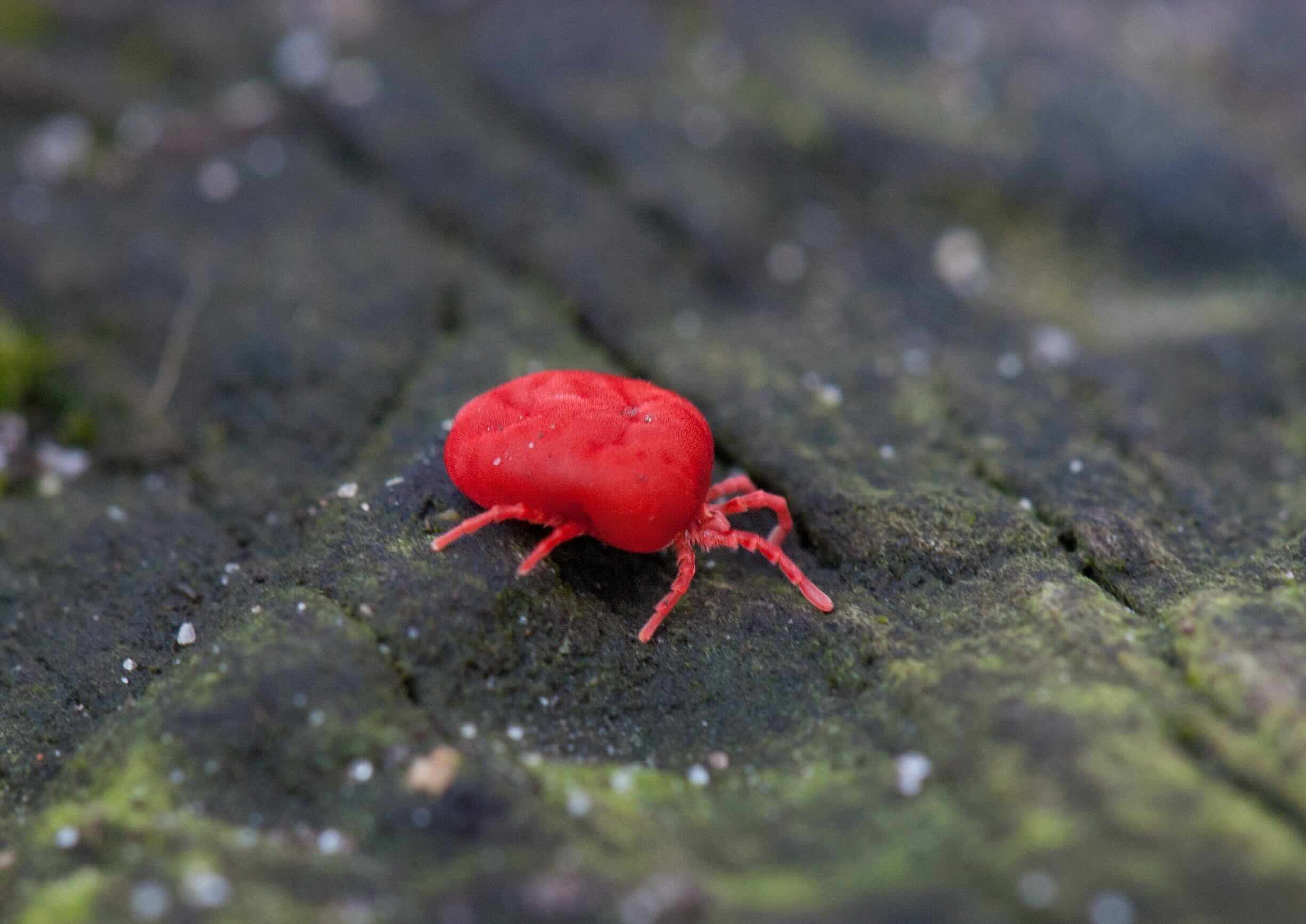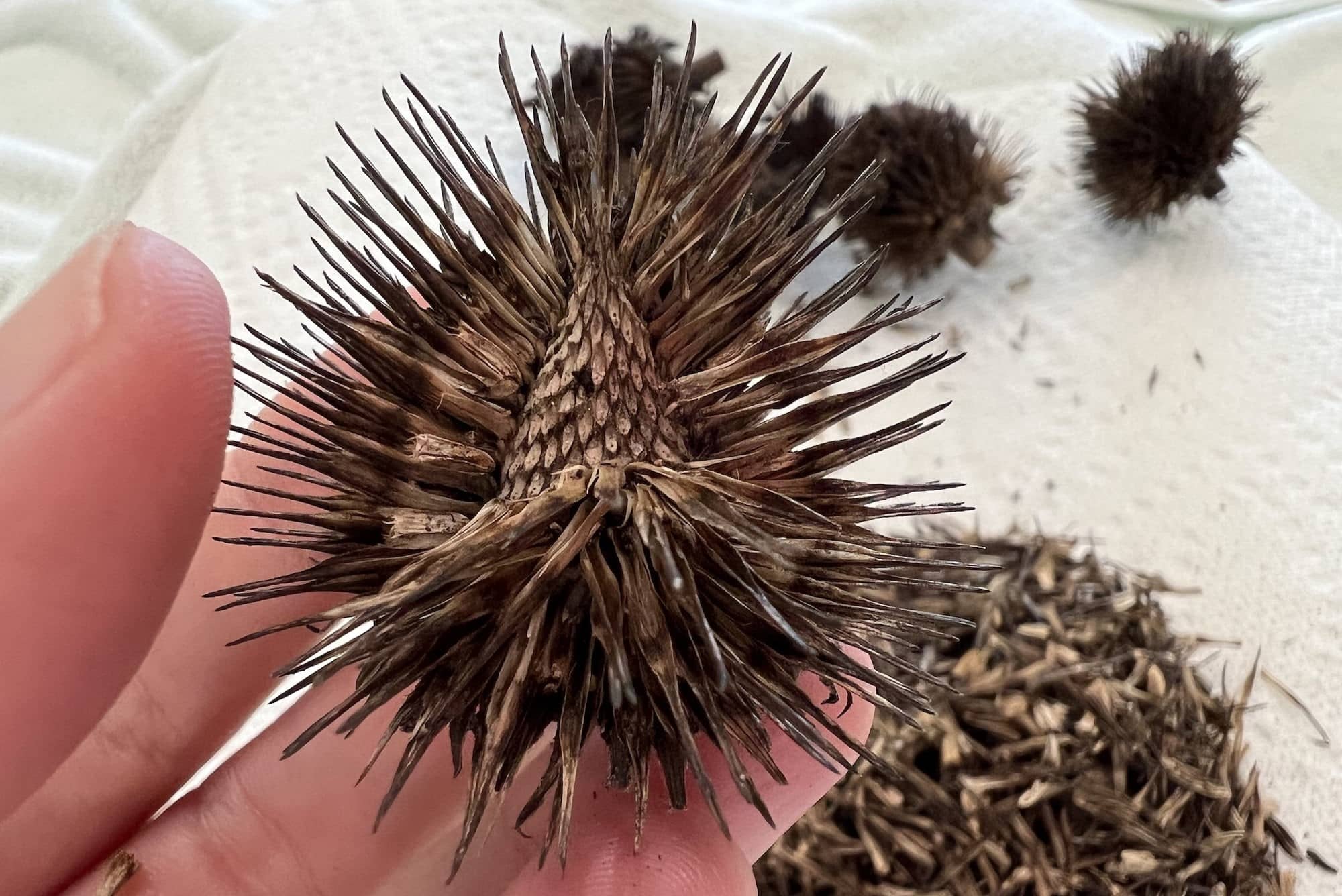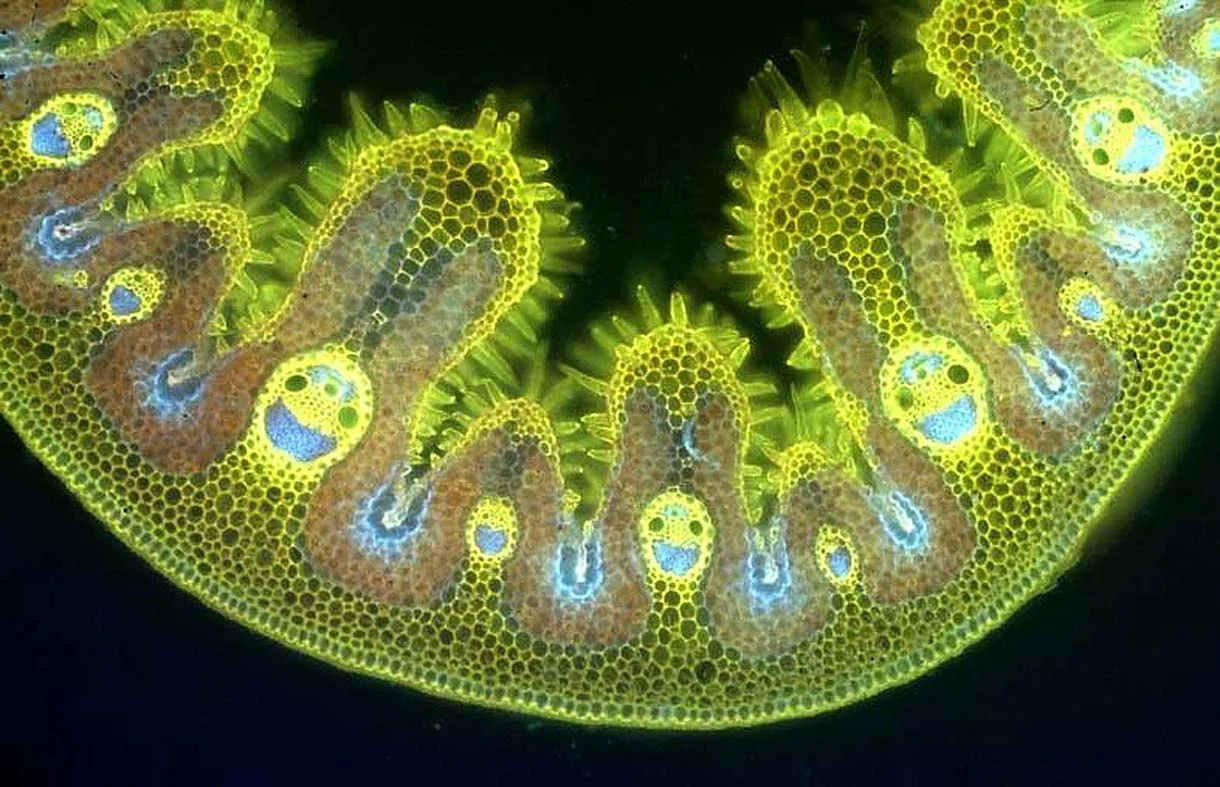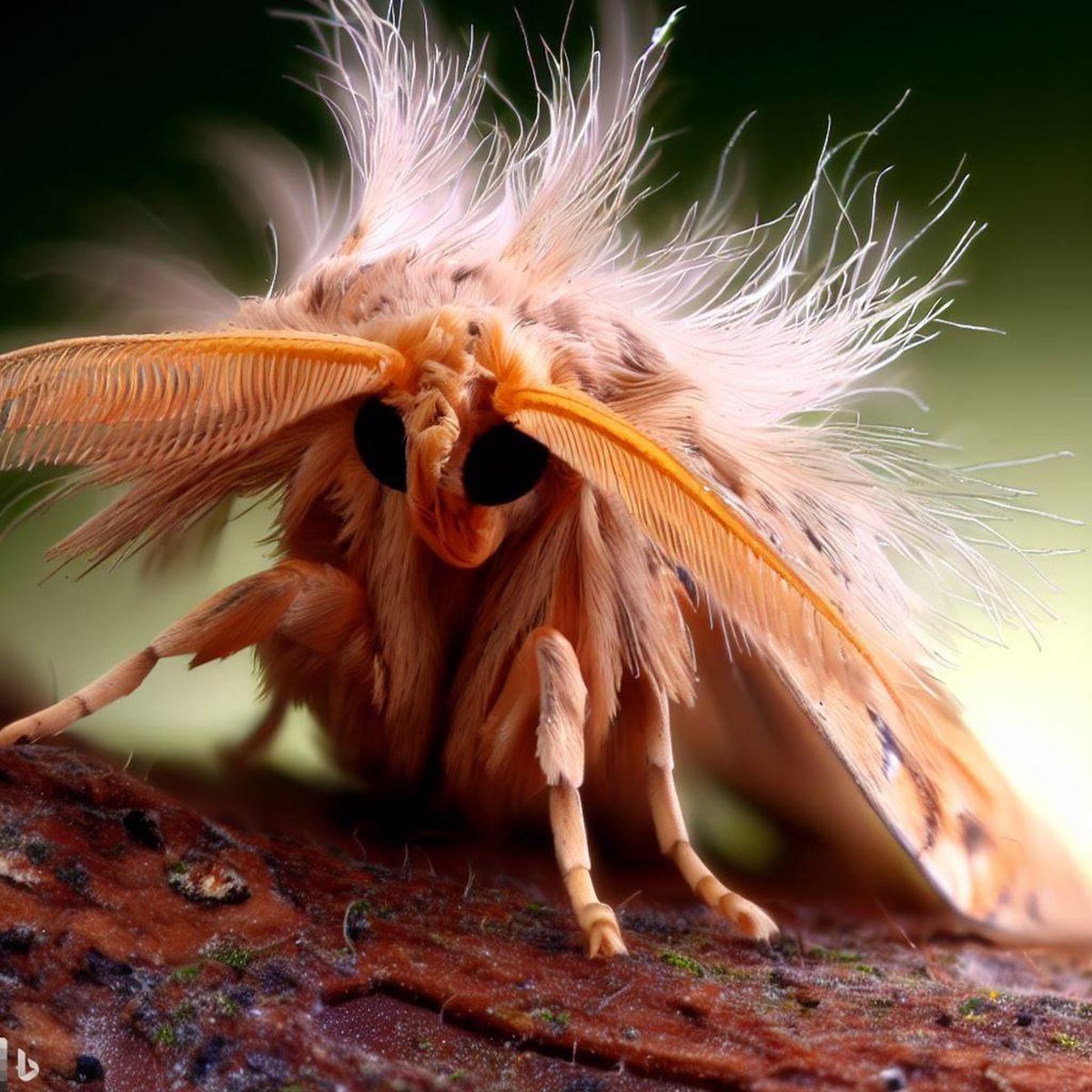

Articles
What Do Carpet Moths Look Like
Modified: May 6, 2024
Discover what carpet moths look like and how to identify them. Read our informative articles on carpet moth infestation and prevention.
(Many of the links in this article redirect to a specific reviewed product. Your purchase of these products through affiliate links helps to generate commission for Storables.com, at no extra cost. Learn more)
Introduction
Carpet moths are a common pest that can wreak havoc on your carpets and other fabrics in your home. These tiny insects may be small in size, but they have the potential to cause significant damage and inconvenience if left unchecked. Understanding what carpet moths look like is an essential step in identifying and addressing an infestation before it becomes a bigger problem.
In this article, we will delve into the physical appearance of carpet moths, how to identify an infestation, the damage they can cause, and steps you can take to prevent and eliminate these pests from your home.
Knowing what carpet moths look like is crucial in differentiating them from other common household pests. By being aware of their characteristics, you can effectively take action to protect your carpets and fabrics.
Key Takeaways:
- Don’t let their small size fool you – carpet moths can cause significant damage to your textiles. Identifying their physical appearance and signs of infestation is crucial for effective prevention and elimination.
- Regular inspection, cleanliness, and proper storage are essential in keeping carpet moths at bay. Implementing preventive measures and acting promptly at the first signs of infestation can protect your cherished belongings.
Read more: What Do Pantry Moths Eggs Look Like
Understanding Carpet Moths
Carpet moths, also known as clothes moths or textile moths, belong to the family Tineidae. These small insects are notorious for infesting and damaging natural fibers such as wool, fur, silk, and feathers.
Unlike other species of moths that are attracted to light, carpet moths are mainly nocturnal and prefer dark, undisturbed areas. They are typically found in closets, under furniture, and in other secluded spaces where they can lay their eggs and feed on natural fibers.
Carpet moths thrive in warm, humid environments, making them particularly problematic in regions with a more tropical climate. They are attracted to the keratin in natural fibers, which provides them with essential nutrients for survival and reproduction.
Understanding the behavior and habits of carpet moths is crucial in effectively preventing and eliminating infestations. By knowing their preferences and tendencies, you can take necessary measures to protect your carpets and textiles.
Physical Appearance of Carpet Moths
Carpet moths have distinctive physical features that set them apart from other insects. While the adult moths are the ones commonly seen, it is essential to understand the complete life cycle of carpet moths to effectively combat an infestation.
The adult carpet moth has a wingspan of about 9 to 16 millimeters, and its body length measures around 5 to 7 millimeters. Their wings are narrow and elongated, with a golden or buff color. The front wings have three distinct dark spots arranged in a triangular pattern, while the hind wings are paler and have a fringed edge.
Adult carpet moths are not the main cause of damage to carpets and textiles. They only live for a short period, usually just a couple of weeks, during which their primary purpose is to mate and lay eggs. It is the larvae, or caterpillars, that cause the most destruction.
Carpet moth larvae are small, cream-colored caterpillars with dark heads. They can grow up to 10 millimeters in length and are covered in fine hairs. These larvae are known for their voracious appetite, feasting on natural fibers and causing irreparable damage to carpets, clothing, and upholstery.
Identifying carpet moth larvae is crucial in determining the severity of an infestation. They can often be found in dark corners of rooms, beneath furniture, or inside closets, where they construct silken tubes or cases to protect themselves as they feed and grow.
It is worth noting that carpet moth larvae are often mistaken for carpet beetles, which are also common fabric pests. However, the larvae of carpet beetles are usually larger and have distinct bristles on their bodies, while carpet moth larvae are smaller and have silk tubes or cases.
Understanding the physical appearance of carpet moths and their larvae is vital in accurately identifying an infestation. By knowing what to look for, you can take immediate action to protect your textiles from further damage.
Identifying Carpet Moth Infestations
Identifying a carpet moth infestation early on is crucial in preventing significant damage to your carpets and fabrics. Here are a few signs that can help you determine if you have a carpet moth problem:
- Visible Adult Moths: Spotting adult carpet moths flying around your home is a clear indication of a potential infestation. These moths are attracted to light and may be seen near windows or light fixtures.
- Damage to Fabrics: Check your carpets, rugs, upholstered furniture, and clothing for signs of damage. Carpet moth larvae chew irregular holes in natural fibers, leaving behind trails of silk and feces.
- Presence of Larvae Stage: Look out for small cream-colored larvae with dark heads. They may be found in hidden areas such as under furniture, along baseboards, or in the corners of rooms.
- Silk Tubes or Cases: Carpet moth larvae construct silken tubes or cases as protective shelters while they feed and grow. Keep an eye out for these tiny structures in secluded areas where the larvae are likely to reside.
- Webbing: In severe infestations, you may notice webbing on carpets, rugs, or in storage areas. The larvae produce silk, which they use to bind fibers together, creating a web-like appearance.
- Moth Eggs: Carpet moth eggs are incredibly small and challenging to spot with the naked eye. However, if you can locate clusters of tiny white or off-white eggs on fibers or along the edges of carpets, it indicates an active infestation.
If you notice any of these signs, it is crucial to address the infestation promptly. Ignoring the problem can lead to extensive damage to your textiles and can be challenging to eradicate.
It is recommended to consult a professional pest control expert if you are unsure about the extent of the infestation or if you require assistance in safely eliminating carpet moths from your home.
Damage Caused by Carpet Moths
Carpet moths can cause significant damage to your carpets, rugs, upholstery, and other natural fiber materials if left unchecked. Understanding the potential harm they can inflict is crucial in preventing extensive and costly repairs.
The larvae stage of carpet moths is the most destructive. They feed on the natural fibers found in carpets and textiles, causing irreversible damage. The damage caused by carpet moth larvae includes:
- Holes and Damage: Carpet moth larvae chew irregular holes in carpets, rugs, and other fabrics. These holes can be small and discreet or large and noticeable, depending on the severity of the infestation.
- Weakened Fibers: As larvae feed on the fibers, they weaken them, leading to fraying, thinning, and disintegration of the material over time.
- Patchy Appearance: The areas of damage caused by carpet moths may result in a patchy or uneven look on carpets and rugs, affecting their aesthetics and overall value.
- Loose Threads: Carpet moth larvae can chew through the threads that hold the carpet together, causing loose or unraveling threads that may require professional repair.
- Damaged Upholstery: Upholstered furniture made of natural fibers, such as wool or silk, can also fall victim to carpet moth larvae. They can leave behind visible holes and compromised fabric integrity.
- Financial Loss: The damage caused by carpet moths can result in expensive replacement or restoration costs for carpets, rugs, and other affected items.
It is important to note that carpet moth larvae are not just limited to carpets. They can also infest clothing, blankets, curtains, and any other natural fiber-based materials in your house. Regular inspection and preventive measures are necessary to protect your belongings.
If you discover any signs of carpet moth damage, it is essential to take immediate action to prevent further infestation and minimize the destruction. Seeking professional assistance can help you assess the extent of the damage and implement effective control measures.
Carpet moths are small, golden-colored insects with a wingspan of about 1/2 inch. They have a distinctive zigzag pattern on their wings and are often mistaken for clothes moths. Keep an eye out for these pests in your home to prevent damage to your carpets and fabrics.
Read more: What Does A Carpet Beetle Look Like
Prevention and Elimination of Carpet Moths
Taking proactive measures to prevent and eliminate carpet moths is essential in safeguarding your carpets, textiles, and other natural fiber-based items. Here are some effective strategies to consider:
Prevention:
- Maintain Cleanliness: Regularly vacuum your carpets, rugs, and upholstery to remove any eggs or larvae that may have been laid. Pay extra attention to areas under furniture and along baseboards where carpet moths tend to hide.
- Proper Storage: When storing woolens, fur, silk, or other natural fiber items, make sure they are clean and stored in airtight containers or garment bags to prevent carpet moths from infesting them.
- Regular Inspection: Conduct routine inspections of your carpets, textiles, and storage areas to detect early signs of carpet moth infestations. Look for larvae, webbing, or any damage to fabrics.
- Temperature and Humidity Control: Carpet moths thrive in warm and humid environments. Maintain a cool and dry indoor environment to discourage their growth and reproduction.
- Natural Repellents: Consider using natural repellents such as lavender sachets, cedar chips, or dried rosemary to deter carpet moths. These scents are known to be unpleasant to moths and can help prevent infestations.
Elimination:
- Deep Cleaning: If you suspect a carpet moth infestation, deep clean your carpets and textiles using hot water extraction or steam cleaning. This can help eliminate any eggs, larvae, or adult moths present.
- Professional Pest Control: If the infestation persists or is severe, it is advisable to seek professional pest control services. They have the necessary expertise and treatments to effectively eliminate carpet moths from your home.
- Freezing or Heating: For smaller items that can be placed in a freezer, freezing them for a few days can kill any carpet moth eggs or larvae. Alternatively, exposing the items to high temperatures in the sun or an oven (at a safe temperature) can also help eliminate the pests.
- Discard Infested Items: For severely damaged items that cannot be salvaged, it is best to discard them to prevent further infestation and spread of carpet moths to other areas of your home.
Remember, prevention is key when it comes to dealing with carpet moths. By implementing these preventive measures and acting promptly at the first signs of infestation, you can protect your carpets and textiles from significant damage.
Regular maintenance, cleanliness, and vigilance are vital in keeping carpet moths at bay. With proper prevention and elimination techniques, you can maintain a moth-free environment in your home.
Conclusion
Carpet moths can be a persistent and damaging pest, wreaking havoc on your carpets, rugs, and other natural fiber materials. However, with the right knowledge and proactive measures, you can effectively prevent and eliminate infestations, protecting your cherished belongings.
In this article, we explored the physical appearance of carpet moths, learned how to identify infestations, discussed the damage they can cause, and provided strategies for prevention and elimination.
By understanding what carpet moths look like, you can identify them early on and take appropriate action. Regular inspection, cleanliness, and proper storage are essential in preventing infestations in the first place. If you do notice signs of an infestation, it is important to act quickly to minimize the damage.
Implementing preventive measures such as maintaining cleanliness, controlling temperature and humidity, and using natural repellents can help deter carpet moths. If an infestation does occur, deep cleaning, professional pest control, and appropriate disposal of severely damaged items are effective strategies for elimination.
Remember, prevention is key when it comes to carpet moths. By regularly inspecting your carpets and fabrics, practicing good hygiene, and taking the necessary preventive actions, you can protect your home from the destructive effects of carpet moth infestations.
If you are unsure or need assistance, do not hesitate to reach out to a professional pest control expert who can provide expert advice and solutions tailored to your specific situation.
With diligence and proper care, you can safeguard your home and enjoy your carpets and textiles for years to come, free from the damaging effects of carpet moths.
If you've tackled carpet moths, you might be battling other unwanted guests. Pantry moths can turn your kitchen into a nightmare, but our experts offer effective strategies for pest control that ensure your pantry stays bug-free. On another note, regular home upkeep is vital. Dive into our guide on essential home maintenance to keep your living space in top shape, preventing costly repairs and enhancing your comfort.
Frequently Asked Questions about What Do Carpet Moths Look Like
Was this page helpful?
At Storables.com, we guarantee accurate and reliable information. Our content, validated by Expert Board Contributors, is crafted following stringent Editorial Policies. We're committed to providing you with well-researched, expert-backed insights for all your informational needs.
